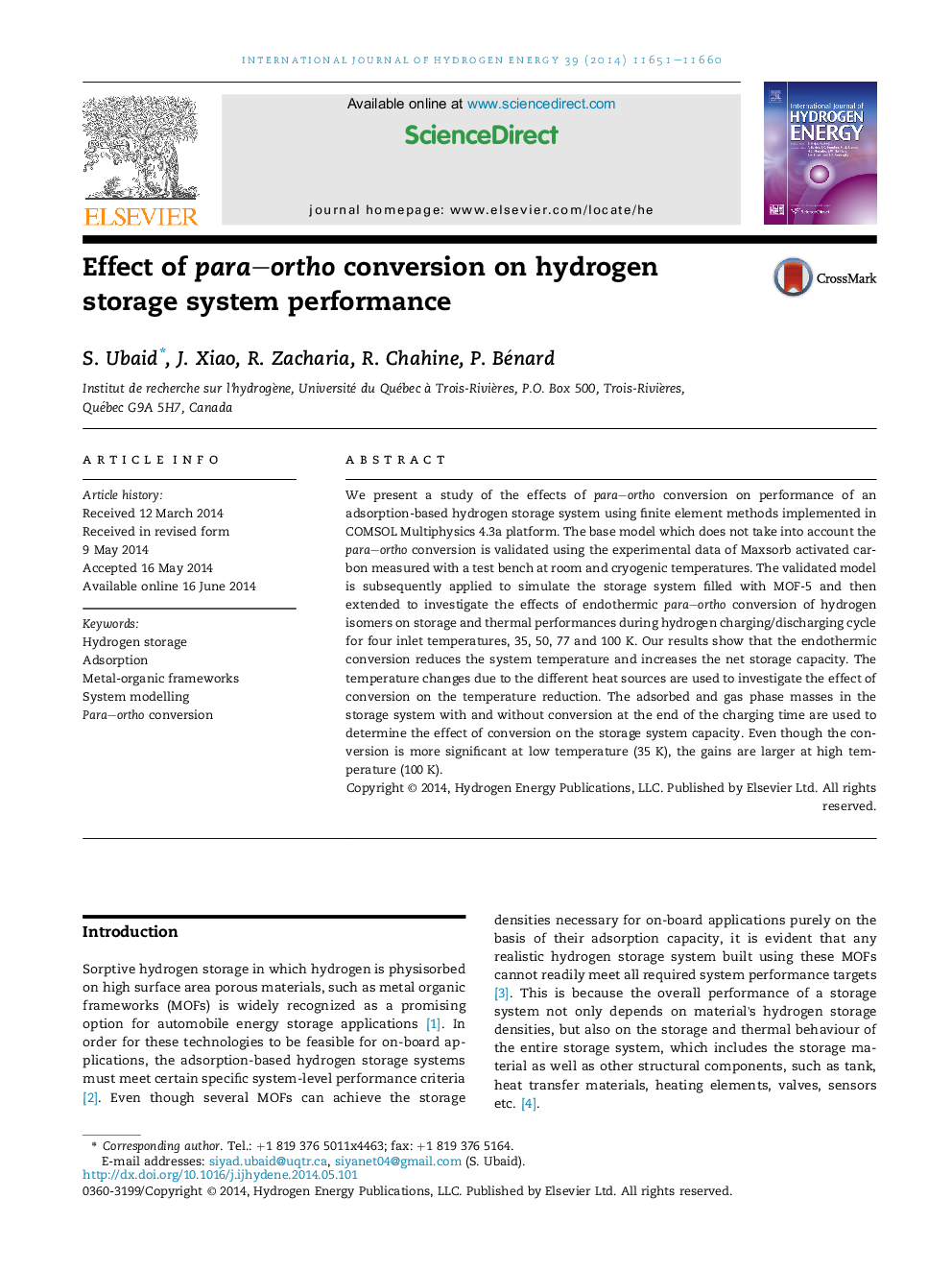| Article ID | Journal | Published Year | Pages | File Type |
|---|---|---|---|---|
| 1273184 | International Journal of Hydrogen Energy | 2014 | 10 Pages |
•Base model is validated using Maxsorb test bench.•The validated model is extended to the MOF-5 storage system.•Para–ortho hydrogen conversion effect on MOF-5 system performance is studied.•Conversion heat is distinguished from other heat sources.
We present a study of the effects of para–ortho conversion on performance of an adsorption-based hydrogen storage system using finite element methods implemented in COMSOL Multiphysics 4.3a platform. The base model which does not take into account the para–ortho conversion is validated using the experimental data of Maxsorb activated carbon measured with a test bench at room and cryogenic temperatures. The validated model is subsequently applied to simulate the storage system filled with MOF-5 and then extended to investigate the effects of endothermic para–ortho conversion of hydrogen isomers on storage and thermal performances during hydrogen charging/discharging cycle for four inlet temperatures, 35, 50, 77 and 100 K. Our results show that the endothermic conversion reduces the system temperature and increases the net storage capacity. The temperature changes due to the different heat sources are used to investigate the effect of conversion on the temperature reduction. The adsorbed and gas phase masses in the storage system with and without conversion at the end of the charging time are used to determine the effect of conversion on the storage system capacity. Even though the conversion is more significant at low temperature (35 K), the gains are larger at high temperature (100 K).
